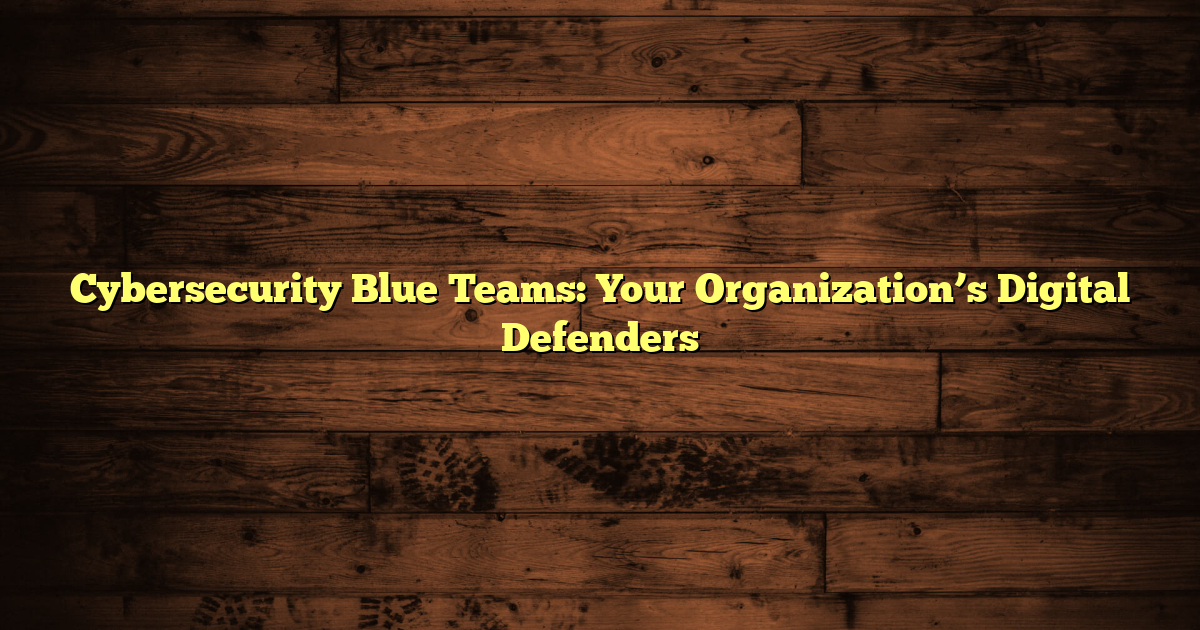Cybersecurity Blue Teams: Your Organization’s Digital Defenders
Table of Contents:
- What Does a Blue Team Do?
- How Does Blue Teaming Work?
- Blue Team vs. Red Team
- Who Makes Up a Blue Team?
- Why Are Blue Teams Important?
- FAQ
Cybersecurity Blue Teams: Your Organization’s Digital Defenders
Have you ever wondered who stands guard against the digital shadows threatening your organization’s data? A cybersecurity blue team functions as the defense force, tirelessly working to shield your digital assets from harm. They are like highly skilled security guards, always vigilant in protecting your sensitive information.
What Does a Blue Team Do?
A blue team has the duty of maintaining as well as improving an organization’s security posture. This involves a multifaceted approach:
- Continuous monitoring – The team pays close attention to network traffic, system logs, as well as other crucial signs to detect unusual activity. This constant vigilance helps in identifying potential cyber attacks or breaches.
- Vulnerability assessments – Regular checks of the systems expose weaknesses that hackers might exploit.
- Incident response – If something suspicious happens, the blue team quickly takes action to investigate, contain, next to fix threats.
- Threat intelligence integration – They use the latest data about developing cyber threats, along with it helps them anticipate future attacks.
- Patch management – They apply software updates promptly to prevent attackers from abusing vulnerabilities that are already known.
They emphasize prevention through preparation, but they also deal with detection and response when incidents occur.
How Does Blue Teaming Work?
The process, known as blue teaming, employs strategic steps intended to safeguard digital infrastructure proactively. This is achieved through:
- Round-the-clock system monitoring for signs of intrusion or anomalies
- In-depth research into the current threat picture (known as Cyber Threat Intelligence)
- Simulations with red teams (the offensive hackers) to test defenses, offering training scenarios
- Prioritization of fixes based on risk levels identified during assessments
- Examination of the evidence following incidents to understand what happened and prevent future occurrences
Because of this strategy, the blue teams are not mere reactive firefighters. In contrast, they resemble architects building resilient defenses around data that is invaluable.
Blue Team vs. Red Team
In cybersecurity exercises, you will hear about red teams in opposition to blue teams. In those scenarios, the red team is on the offense – they simulate real-life hacking attempts, thus trying to break into the system. On the contrary, the blue team plays defense, trying to detect simulated attacks in real time but also stop them from succeeding.
This relationship helps the organizations to recognize weaknesses in their defenses without enduring actual damage.
After red team exercises, the vulnerabilities are revealed by “attacking”, as well as the blue team discovers how well their detection tools performed as well as improving their strategies accordingly. These two groups cooperate in order to generate an ongoing cycle of testing and strengthening security.
Who Makes Up a Blue Team?
A typical blue team consists of cybersecurity professionals, such as:
- Security analysts who monitor alerts
- Incident responders who manage breaches
- Threat hunters who proactively search for hidden attackers
- Forensic experts who analyze previous incidents
They all work together within the IT or security department of the organization. They are equipped with specialized tools. One example of such is Security Information & Event Management (SIEM) platforms. These platforms aggregate logs from the networks so that suspicious patterns will be spotted quickly.
Why Are Blue Teams Important?
With cyberattacks becoming advanced each day – from ransomware locking down the files of entire companies to stealthy Advanced Persistent Threats (APTs) lurking undetected – a solid defense is essential.
Blue teams offer this necessary safeguard by:
- Detecting intrusions early, before major damage occurs
- Responding quickly with containment measures
- Improving defenses continuously based on lessons learned
- Cooperating with parts of IT like compliance officers. As a result, policies meet regulations.
Without these efforts, organizations will be defenseless and easy victims for hackers.
FAQ
What is the main goal of a cybersecurity blue team?
The main goal is to protect an organization’s digital assets from cyber threats through proactive measures, continuous monitoring, next to incident response.
How does a blue team differ from a red team?
A blue team is on the defense, safeguarding systems from attacks. A red team is on the offense, simulating attacks to test security measures.
What are some tools used by blue teams?
Blue teams use tools such as Security Information & Event Management (SIEM) platforms, intrusion detection systems, along with vulnerability scanners.
Resources & References:





